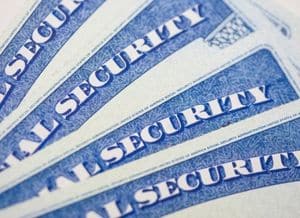Life is unpredictable. When unforeseen events disrupt your plans, a financial safety net protects you. An emergency fund acts as a buffer against sudden expenses, providing peace of mind, financial stability and the ability to protect your lifestyle. Whether it’s an unexpected medical expense, a car repair or job loss, having a well-funded emergency reserve keeps you on the right path.

Why an Emergency Fund is Essential
Not all of life’s surprises are pleasant. Without an emergency fund, you might be forced to rely on credit cards or loans with high interest rates to pay your bills. If these balances cannot be paid on time, you can quickly find yourself trapped in a cycle of debt. There can also be lingering consequences for years to come, such as a drop in credit score making it harder to get low interest rates in the future. An emergency fund ensures you have quick access to cash when you need it the most. Your long-term financial plans remain undisturbed because you haven’t dug yourself into a hole.
How Much Should You Save?
The ideal size of an emergency fund depends on your personal circumstances. A common rule of thumb for emergencies is to save three to six months’ worth of living expenses. Don’t forget to account for all your monthly necessities. Add your rent or mortgage, utilities, groceries, insurance and transportation—and then multiply by the number of months you want your fund to cover. If you have dependents or work in an unstable industry, you should aim for a larger cushion, perhaps six to twelve months of expenses.
Steps to Building Your Emergency Fund
Set a Realistic Goal: Determine how much you need based on your monthly expenses. This target will guide your saving efforts and help you stay motivated.
Create a Budget: Budgeting is the quintessential step to saving for anything. The 50-30-20 rule is a popular method for distinguishing money for a specific purpose. In this method, 50% of your income (after taxes) goes towards your necessities – car payments, mortgage and rent, food, etc. 30% percent of your income is set aside for the things you want – eating out, travel, new golf set, etc. Finally, 20% is tucked away into savings – retirement, future car or house and, of course, an emergency fund. Putting aside more into your emergency fund is always allowed, but this rule provides helpful guidance in a wide range of circumstances.
Start Small: Building an emergency fund seems daunting, especially if you’re starting from scratch. Regardless of what stage of life you may be in, or how much income you generate, if you’re starting out, begin with a modest goal (even $500 or $1,000 if that’s realistic for your situation, or more if you’re in a position to save more). Achieving this initial milestone can provide a sense of accomplishment and encourage you to keep going.
Automate Your Savings: Set up automatic transfers from your checking account to a dedicated savings account. Treat this transfer like any other non-negotiable monthly expense. By automating the process, you’re less likely to skip a month and more likely to develop a consistent saving habit. Some employers sponsor ESAs or emergency savings accounts, which will automate your savings and possibly match your contributions. Or consider splitting your paycheck to automatically send a small dollar amount or percentage with each pay period directly into your savings account.
Increase Income: Look for opportunities to temporarily gain more income. If you expect cutbacks or another financial emergency to occur, take on a part-time job, try out freelancing or sell those unused items sitting in the closet to help you reach your emergency goal faster.
Avoid Temptation: Keep your emergency fund in a separate, easily accessible savings account, but avoid linking it to your checking account to prevent impulsive withdrawals. Consider using a high-yield savings account to earn interest on your savings while maintaining liquidity.
Maintaining Your Emergency Fund
Once you’ve built your emergency fund, it’s important to maintain it. Replenish any money you withdraw as soon as possible and review your savings goals periodically to ensure they still align with your financial situation. As your income and expenses change, you may need to adjust the size of your emergency fund. Remember to keep your emergency fund liquid, such as in a savings account.
Peace of Mind
Having an emergency fund is more than just a financial strategy; it’s a step towards financial independence and security. The peace of mind that comes from knowing you can handle unexpected expenses without stress is invaluable. An emergency fund grants you a little extra time to handle the situation without worrying about quick fix solutions.
Building an emergency fund may take time and discipline but the financial stability it provides is well worth the effort. If you need help putting together an emergency fund for your financial needs, you can discuss your needs with a financial planning expert.
Contact Stephanie Anderson via our online contact form for assistance.
Councilor, Buchanan & Mitchell (CBM) is a professional services firm delivering tax, accounting and business advisory expertise throughout the Mid-Atlantic region from offices in Bethesda, MD and Washington, DC.



